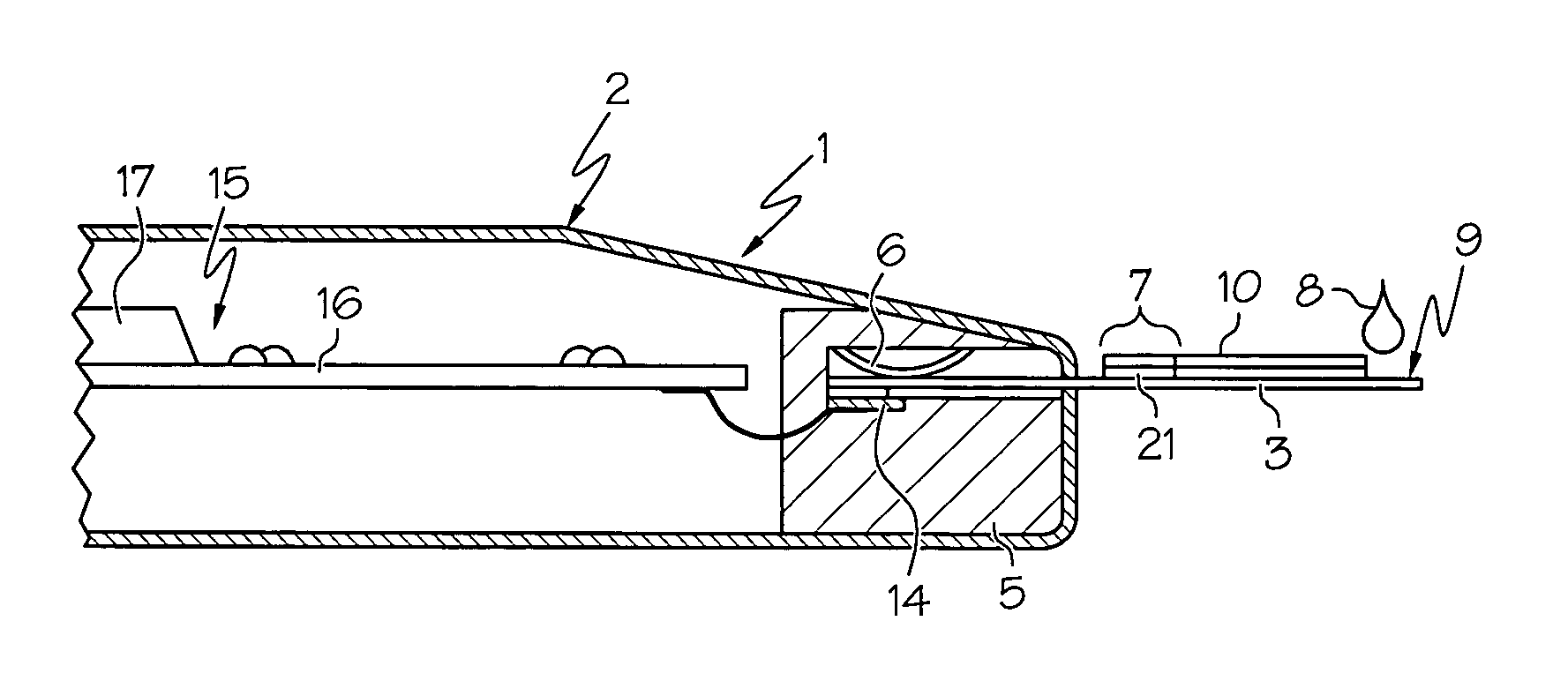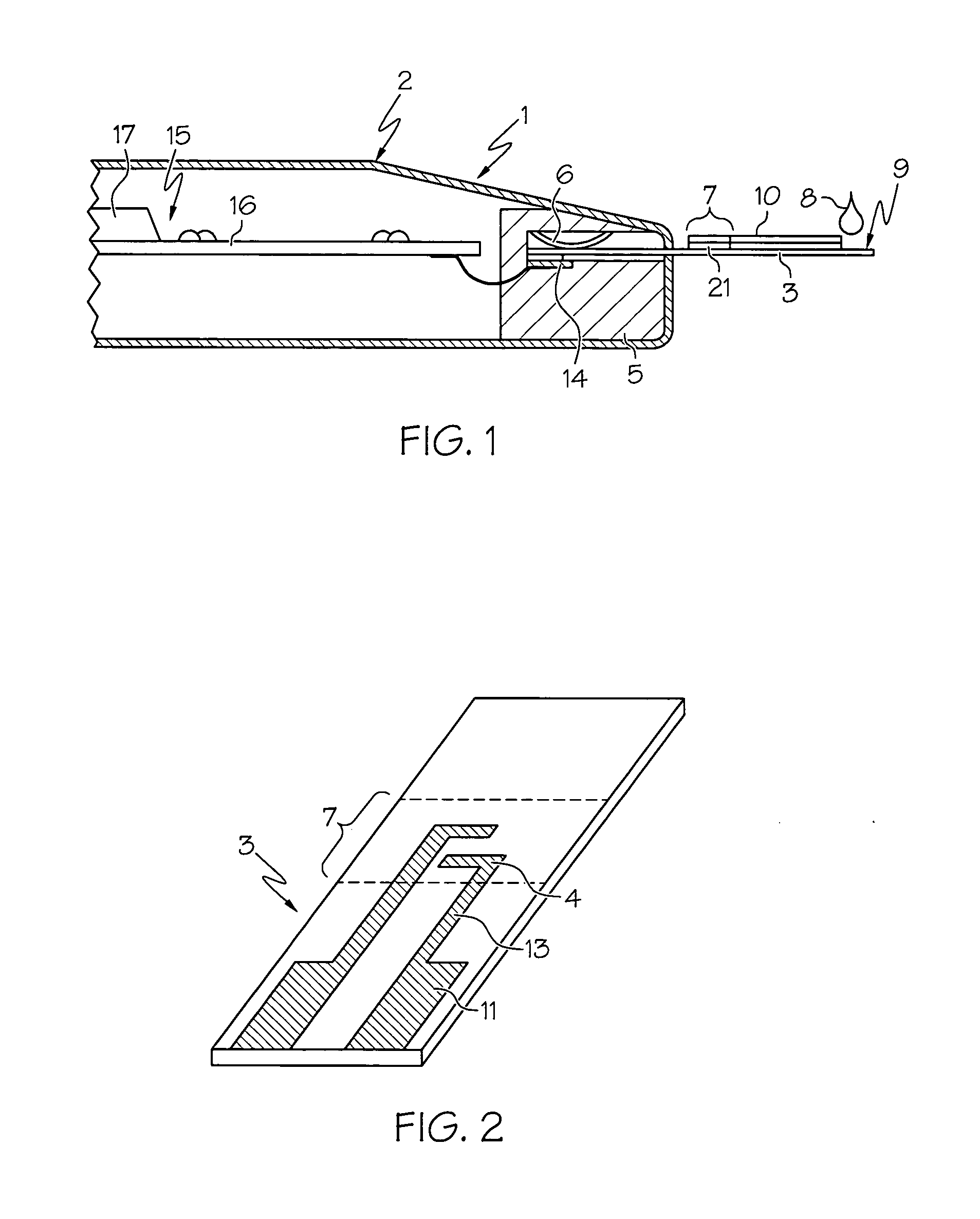Test element analysis system with contact surfaces coated with hard material
a technology of hard material and analysis system, which is applied in the direction of instrumentation, material electrochemical variables, analysis using chemical indicators, etc., can solve the problems of adverse effect on contact security and contact resistance, high mechanical strain, and high mechanical strain, so as to improve contact reliability, increase the transition resistance, and improve the effect of accuracy and reproducibility
- Summary
- Abstract
- Description
- Claims
- Application Information
AI Technical Summary
Benefits of technology
Problems solved by technology
Method used
Image
Examples
example 1
Contact Elements with Chromium Nitride-coated Contact Areas
[0086] a) Microscopic Examination of the Surface
[0087] In order to demonstrate the advantageous effect of hard material surfaces according to the invention as contact areas in an electrical contact connection of a test element analytical system, the contact areas of such plug-in connections were coated with chromium nitride. A 480 nm thick chromium nitride layer was applied to the contact areas of the plug-in connection using a PVD process. In each case new test elements were plugged 480 times into plug-in connections coated in this manner. These test elements had gold layers having a thickness of 50 nm as contact areas which were applied to a plastic foil. After 480 insertions the picture of damage to the contact areas of the plug-in connection as well as to the individual contact areas of the test elements were evaluated microscopically. As a comparison 480 test elements were inserted into conventional, non-hard material...
example 2
Contact Elements with Titanium Nitride-coated Contact Areas
[0099] Analogous experiments were carried out with plug-in connections with contact elements whose contact areas had a hard material surface according to an embodiment of the invention consisting of 120 nm titanium aluminium nitride which was also applied by means of a PVD process.
[0100] a) Microscopic Examination of the Surface
[0101] Also in this case it turned out that a hard material-coating of the contact areas of the plug-in connection with titanium aluminium nitride according to the instant embodiment considerably improves the picture of damage to the contact areas of the test elements. Microscopic observation of the respective contact areas of the test element showed that the contact area of the test element was deformed but to a much lesser extent than with the controls that were not coated with a hard material. In particular, larger material erosions or changes in the layer thicknesses were not observed and the g...
example 3
Change in the Transition Resistances from Example 1 and 2 After Numerous Plug-in Processes
[0107] For reproducible use in test element analytical systems over a long time period and for many measurement cycles it is also important that the transition resistances are as constant as possible and do not exhibit an extreme running-in or wear behavior which is characterized by initially high and then decreasing resistance values or initially low and then increasing resistance values.
[0108] Control plug-in connections with contact areas made of electropolished palladium exhibited scattered contact failures characterized by “infinite” resistance values over the 480 insertions of a new test element in each case over the entire time period. Such randomly scattered contact failures are disadvantageous especially for the reproducibility of the measurement result since a measurement error must always be expected with a certain probability.
[0109] Plug-in connections with contact areas which we...
PUM
| Property | Measurement | Unit |
|---|---|---|
| thickness | aaaaa | aaaaa |
| thickness | aaaaa | aaaaa |
| thickness | aaaaa | aaaaa |
Abstract
Description
Claims
Application Information
 Login to View More
Login to View More - R&D
- Intellectual Property
- Life Sciences
- Materials
- Tech Scout
- Unparalleled Data Quality
- Higher Quality Content
- 60% Fewer Hallucinations
Browse by: Latest US Patents, China's latest patents, Technical Efficacy Thesaurus, Application Domain, Technology Topic, Popular Technical Reports.
© 2025 PatSnap. All rights reserved.Legal|Privacy policy|Modern Slavery Act Transparency Statement|Sitemap|About US| Contact US: help@patsnap.com



